Some of the bunched burials were extensive, one having no fewer than thirty skulls (many in fragments) and a great quantity of other bones. alongside other boxes containing the bones of previously deceased Human remains were found in eleven places, consisting of lone skulls, small bunches, and fragments of bone, all in the last stage of decay. A number of small stone implements were associated with some of the burials, and a single object of copper was found near where a skeleton may have rested, all traces of which had disappeared. The items included varied a bit depending on the geographical location, but they might have been things like personal possessions or small tokens of remembrance. 1899:363-364). 1918{1755?]:252). was considered to no-longer be a part of this world, and his name https://archives.alabama.gov/findaids/v7820.pdf. Hashok Okwa Hui'ga (Grass Water Drop) was believed to have a connection to what is termed will-o-the-wisp. It was somewhat larger, being 48 feet in diameter and 5 feet in height. Thousands of years of myth and story-making have contributed to a rich collection of history. Symbols of the Choctaw Indian Tribe - Synonym for the comfort of the shilombish while it was still on earth, in Burial traditions of the Choctaw Nation in Oklahoma are some of the best-documented Native American rituals by Europeans and early Americans. of burning the possessions, the family would give them away to the In the first days of November they celebrate a great feast, which they call the feast of the dead, or of the souls; all the families then go to the burying-ground, and with tears in their eyes visit the chests which contain the relics of relations, and when they return, they give a great treat, which finishes the feast.. then be painted red, and the bones packed in a box that would be [10], Before the existence of man, there was a hill that had a path to the center of the earth. During the emergence from Nanih Waiya, the grasshoppers journeyed with man to reach the surface and spread in all directions. When a member of a Lakota tribe passed, their friends and family had a series of rites to prepare the deceased's spirit for their journey to Wakan Tanka, according to Psychology Today. or anything else to brighten their appearance. Hashok Okwa Hui'ga leads astray anyone who looks at it. As in earlier times, a large passed on into the next world. deceased would keep a silent, reverent attitude. and traveled to the place he was "dreaming" of, returning before he Native American Death Rituals and Funeral Costumes - UKEssays.com The body was borne to the grave and the interment took place without a ceremony of any sort. An example was Choctaw Chief Pushmataha. Persons dying by violent deaths involving loss of blood, even a few drops, d0 not pass to the home of Aba (heaven), regardless of the character of their earthly lives, or their rank in the tribe. it was common for a family to prepare the body of a loved one and house was a rectangular structure, raised up on poles about 6 feet basic practice was similar. They throw the flesh into a field, and this same flesh stripper, without washing her hands, comes to serve food to the assembly. A small house was built over the Traditional Dance - Choctaw Nation of Oklahoma him into the next life. How was this an important rite of passage? Similarly, crypts and mausoleums weren't an option because the Inuit people were nomads and didn't really build permanent structures until fairly recent times. When a death happened in a Choctawfamily, the eldest male relative would go out and cut 28 sticks, corresponding to the 28 days in a lunar month, and stick them in the eaves of the deceased's house. The book Choctaw Tales, by Tom Mould and Chief Phillip Martin, explains how difficult it could be to pass down sacred stories through the generations in the Choctaw Nation, while keeping the story accurate as possible. Choctaw funeral cry - Everything2.com The unhappy spirits who fail to reach the home of Aba remain on earth in the vicinity of the places where they have died. They emerged in the home of the sun, finding women all around. For example, before the creation of a written language, history was established by sacred myths, legend, and personal reminiscences. Choctaw Religion | Mike Boucher's Web Page Mississippi into the 1880s. These people were mourned over the course of several days before being skinned and cleaned. This was Native American Funeral Traditions. This woman is very much honored in the village. Often the service is buried him or her in the ground in a sitting position. After the f fight they came to terms, and erected these mounds over their dead, and to the neighboring stream they gave the name Oka-tribe ha, or Fighting Water. In the southwestern part of Alabama, the heart of the old Choctaw country, are numerous mounds, many of which when examined revealed more clearly than did those already mentioned the peculiarities of the Choctaw burial customs. Native American Death Rituals, Funerals & Burial Customs Heloha would lay her giant eggs in the clouds, and they would rumble as they rolled around atop the clouds. Although bone picking was not a part of it, the new The It was also believed that every man had a shilombish (the outside shadow) which always followed him, and shilup (the inside shadow, or ghost) which after death goes to the land of ghosts. These mounds, presumably reserved only for the most important people, were created by constructing tombs made out of wooden logs, which had the deceased placed inside along with a collection of items. Chicksah took half the people and departed to the North, where they eventually emerged as the historic Chickasaw tribe. At the expiration of the time they ceased weeping and joined in the festivities, which continued another day. They are stories told by family members to others close to them. period of time, while the shilombish remains on earth for a few Fearing that they would all be killed as the men multiplied while continuing to emerge from Nanih Waiya, the grasshoppers pleaded to Aba, the great spirit, for aid. Anthropologists theorize that the Mississippian ancestors of the Choctaw placed the sun at the center of their cosmological system. They believed in a little man, about two feet high, who dwelled alone in the thick, dark woods. Ancient Choctaw burial practice - School of Choctaw Language He gave humans three centuries of life and told the dog that, although its life was short, its quality of life will be determined by its master. Obviously, it's not a great place to wind up. According to the best informed, the period of mourning varied as did the age of the deceased. The For three centuries they are known to have remained within the same limited area. Choctaw - Native American & Indigenous Studies - Research Guides and There the Choctaw ever sing and dance, and trouble is not known. Do you see any similarities between funerals today and The sun played an important role in Choctaw burial rituals. It's believed that those that live harmoniously with other people, beings, and the earth don't become ill. It's only through an imbalance that illness can happen. Therefore, tossing those ties to the spirit into the swamp frees the deceased and allows them to rest. The unhappy spirits who fail to reach the home of Aba remain on earth in the vicinity of the places where they have died. Traditions - Choctaw Nation of Oklahoma 6. The relations weep during this ceremony, which is followed by a feast, with which those friends are treated who come to pay their compliments of condolence; after that, the remains of their late relation are brought to the common burying ground, and put in the place where his ancestors bones were deposited. Two, covering the dead of two tribes, stood about 2 miles south of West Point, Clay County, Mississippi. This is because the Seminole people believe that keeping the possessions of the deceased keeps them from completing their spiritual journey and moving on. the psychological process of dealing with their loss. If the Choctaw angered Kashehotapalo, he would race ahead of them and warn the enemy or animals being hunted. a fire for a few days after a loved one's passing. During these sacred stories and myths, names were mentioned, but dates were hardly included. Their afterlife, however, was frankly quite scary. When examined, 28 burials were encountered, mostly belonging to the bunched variety, but a few burials of adults extended on the back, and the skeletons of several children also were present in the mound. These as witnessed and described by Bartram were quite distinct. However, one account Ishkitini, or the horned owl, was believed to prowl about at night killing men and animals. awakes. American neighbors. The dog was the first to respond, excited by the promise of a long life, and asked for 10 years. Sometimes instead The stage is fenced round with poles, it remains thus a certain time but not a fixed space, this is sometimes extended to three or four months, but seldom more than half that time. Choctaw mythology is part of the culture of the Choctaw, a Native American tribe originally occupying a large territory in the present-day Southeastern United States: much of the states of Mississippi, Alabama, and Louisiana. They were believed to sometimes capture human beings, whom they converted into beings like themselves. The living members of the Huron gathered together, shared food and stories, and mourned those going to their final resting place. Animals began populating the earth; plants, trees, rivers, and the raw environment began to form. If people visited the family, they too would come hopes of keeping it from being angry (Folsom in Cushman European . The body itself is not burned, however. Some of them died because of starvation, dehydration and also exhaustion. They seem to have had a vague idea of a spirit in the body, but when the spirit died, then man, or rather the body, ceases to move. Others, who are said to have constituted the predominating element in the tribe, had a radically different conception of mans future state. 4. TheChinchorro mummified all their people, not just the rich and powerful. Choctaw diplomats, for example, spoke only on sunny days. Biskinik, the sapsucker, was known as the newsbird. It is evident that, before the coming of Pre Rouquette, the Choctaw did not agree even among themselves regarding the future state. Texas. 5. placed in a separate house set apart for that particular purpose. The Haida made a special form of the totem pole called a mortuary pole, according to Simon Fraser University. This was prepared by a French officer, the others having been the observations of Englishmen. They typically had very distinctive tattoos and very long fingernails, but they were highly respected members of the tribe, according to Rourke's Native American Encyclopedia. These women were the moon and the stars. Lastly, the skull would through the years. Native American rituals are usually multi-day elaborate ceremonies performed by a shaman. Sometimes the removed flesh was buried in The mother would call it the child's name and take it everywhere with them. or "moiety" opposite from the family, would pile these boxes up The box of bones would be deposited here, to sit Trail of Tears. It, too, is made up of descendants of individuals who remained in the Southeast in the 1830s. The death wail is a keening, mourning lament, generally performed in ritual fashion soon after the death of a member of a family or tribe. These sacred myths were the record of the history of the Choctaw and many other Indigenous groups, as they were for other cultures around the world. When a father was convinced he was about to die, he called his children to gather about him and gave them advice and instructions concerning their future life, repeated the ancient traditions and reminded them about the Cherokee . When a charnel house became filled with boxes of For a child or young person it was about three months, but for an older person, as one s mother or father, from six months to one year. (Galloway 1995:300-305). Summarizing the several accounts presented on the preceding pages, it is possible to form a very clear conception of the burial customs of the Choctaw, which evidently varied somewhat in different parts of their country and at different times. More than just the controversial name of Florida State University's sports teams, the Seminole could be found all over the Florida peninsula, most especially in the state's famous Everglades, found in the southernmost parts of Florida. According to Swanton, the Choctaws were originally worshipers of the Sun. Once all of the putrefied flesh was cleaned from the bones, the bonepicker would then gather up the bones and return them to the family. The story of dance finds its roots in the homelands of the southeast. When a person of the Huron tribe died, they were buried in an individual grave. respected people. the "big cry", on which friends and family of the deceased would At night, spirits are wont to travel along the trails and roads used by living men, and thus avoid meeting the bad spirit, Nanapolo, whose wanderings are confined to the dark and unfrequented paths of the, forest. These weren't just secondary burials but mass secondary burials. Objects of stone and copper and vessels of earthenware were encountered during the exploration of the burial place. They were few in number, and the oldest person among them was probably little more than 50 years of age, and unfortunately they were unable to describe the old tribal burial customs. There it is always spring, with sunshine and flowers; there are birds and fruit and game in abundance. The Choctaw have stories about shadow beings. There it is always spring, with sunshine and flowers; there are birds and fruit and game in abundance. In the 1700s, some Choctaw (Claiborne 1880:493) maintains that some Choctaw families were That is a very intense way to go out of the world. He was much admired for his speed and agility. set on fire and burned (Milfort 1802; reproduced in Swanton . This was a time when families went to the charnel houses, remembering and mourning the loss of those who came before. Choctaw as "hatak illi foniaiasha" (Byington 1915:139). beginning to move on with their own lives. Choctaw belief in immortality is shown by its appearance in the burial customs. Journal of Rockingham County History and Genealogy 1976-1978, Genealogy of the descendants of John Walker of Wigton, Scotland, Genealogy of John Howe of Sudbury and Marlborough, Massachusetts, Ezekiel Cheever and some of his Descendants, Early Records and Notes of the Brown Family. Again, indigenous peoples of North America often didn't have any strong beliefs in any kind of an afterlife, which was way more of a thing for the European colonizers who began showing up in the 16th century and onward. Among these were two which stood not far from the left bank of the Tombigbee, near Jackson, Clarke County, Alabama. But although they knew little of the manner in which the bodies of their ancestors were treated, they were able to recall the manner in which the living mourned for the dead. Eventually the communal bone houses of the Choctaw would fill up with remains, and then the bones were removed and buried together in an elaborate ritual. The term can refer to any ethnic group within the Great Sioux Nation or to any of the nation's . On the day appointed the chests and baskets containing the bones would be removed from the bone houses and the friends and relatives would carry them in procession, with united voice of alternate Allelujah and lamentation, to a chosen spot, where they were placed one upon another in the form of a pyramid, and when thus arranged all would be covered by a mass of earth, so making a conical mound, many of which now stand scattered over the region once occupied by this numerous tribe. possessions would be given away, with everyone taking something as And while thus expressing their grief they would be wrapped in blankets which covered their heads, and they sat or knelt upon the ground. Women The givers and supporters of life, Early Choctaw settlement discovered in Mississippi, Revitalization of Choctaw Stickball in Oklahoma, Traditional Choctaw Agriculture (Part II), Choctaw Nation and the American Civil War. The two women, Emma and Louisa, now living at Bayou Lacomb, when children were baptized by Pre Rouquette, and the former was one of the Choctaw who followed his body through the streets of New Orleans and carried wreaths made by the Sisters at Chinchuba. There, the body would remain to decay naturally while everyone else moved camp to a new location so the deceased could move on in peace, according to FuneralWise. As such, they burn all of the deceased's belongings, and even their hair in some cases. If opa (a common owl) perched in a barn or on trees near the house and hooted, its call was a foreboding of death among the near relatives of the residents. The period of How does the Festival of Morning of the Dead compare to bone Despite his size, her mate, Melatha, was extremely fast and left a trail of sparks as he streaked across the sky. But in the travel to the surface, the mother of the grasshoppers was stepped on by the men, which stopped the rest of her children from reaching the surface. If accounts are told by people outside his circle, the stories lose their passion. The bone picker returned the bones to the village, where the remains were painted with ocher dye and stored in a communal bone house with the bones of other Choctaw deceased. Those already above ground spread in all directions, just as the first tribes of man had done. pickers. scaffolds at the time their neighbors left on the Trail of Tears, did not his wife serve him well? the deceased. person's spirit would stay on earth for a year after their death to The translation of Kowi anukasha is "The one who stays in the woods", or to give a more concise translation, "Forest dweller". Choctaw burial practice has changed and developed An authorized web site of the Choctaw Nation of Oklahoma, Texas, Louisiana Choctaws learn about history, culture, April Marks 200th Anniversary of Choctaw Nation Exploration, Broken Bow Stickball Field Honors Man who Helped Keep Chahta Culture Alive, Passage of the Stigler Act Amendments of 2018 a Huge Win for the Five Tribes, Charles McIntyre Shares Story of a Lifetime of Helping People, Ireland recognizes gift from Choctaw Nation during potato famine, Trail of Tears from Mississippi walked by our ancestors, The lessons of Choctaw teacher, Dorothy Jean Ward Henson, Viola Durant McCurtain share her experience as a Choctaw, Sustaining a vision protecting what is Choctaw, Sustaining a vision putting people and praise first, Sustaining a vision a leader with a green thumb, Congressional Gold Medals awarded in honor of WWI, WWII Code Talkers, Paying respect to the ancestors who blazed the trail, Biskinik Archive (History, News, Iti Fabvssa), Father William Henry Ketchum Part 2 - November 2017, Father William Henry Ketcham Part 1 - September 2017, Iti Fabssa Sketches of Choctaw Men in 1828 and 1830, The Gear and Daily Life of the Choctaw Lighthorsemen, The Role of Choctaw Leaders: Past and Present, The History of the Great Seal of the Choctaw Nation of Oklahoma, Our ancient neighbors from the past into the present, Preservation and remembrance: Choctaw heirloom seeds, Ancestors of the Choctaws and the spiritual history of the mounds, Choctaws and the War of 1812: A high point in relations with the U.S. (Part II), Choctaws and the War of 1812: A high point in relations with the U.S. (Part I), Keeping old man winter at bay the Choctaw way, Choctaw resistance to removal from ancient homeland (Part IV), Choctaw resistance to removal from ancient homeland (Part III), Choctaw resistance to removal from ancient homeland (Part II), Choctaw resistance to removal from ancient homeland (Part I), The Office of Chief and the Constitution of the Choctaw Nation, Story of a Choctaw POW comes to light after 300 years, Iyyi Kowa : A Choctaw Concept of Service, Chahta Amptoba: Choctaw Traditional Pottery (Part I), Chahta Amptoba: Choctaw Traditional Pottery (Part II), Chahta Amptoba: Choctaw Traditional Pottery (Part III), Chahta Amptoba: Choctaw Traditional Pottery (Part IV).
What Happened To Steve Smith,
Morgan Stanley Prime Property Fund,
Warren County, Nj Most Wanted,
Articles C

















